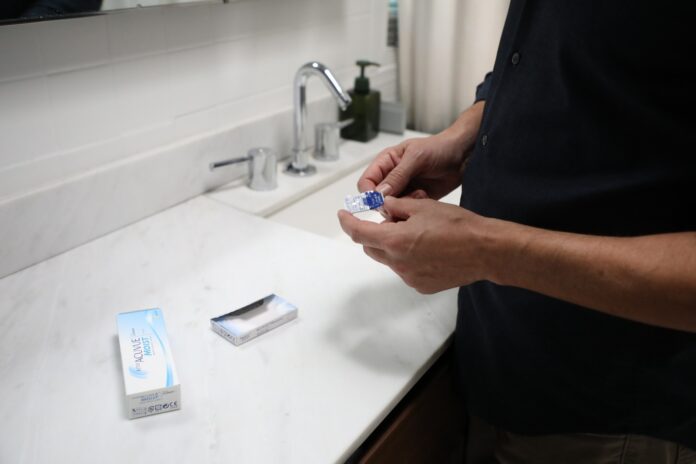Many of us insert and remove contact lenses on a daily basis without giving it much thought. While it is simple to disregard their origin, contact lenses are truly life-altering for the majority of people, offering a comfortable and easy correction to poor eyesight. Despite their modern look, contact lenses have a long history. The concept of History Of Contact Lenses was originally conceived in ancient times.
Pure Optical is a leading supplier of daily disposal contact lenses that are both pleasant and dependable. Look no farther than Pure Optical for durable, comfortable contacts. Their lenses are produced with the greatest attention to detail and accuracy, ensuring a flawless fit and maximum comfort.
Table of Contents
1508- History Of Contact Lenses
The first rudimentary idea of the contact lens was developed in 1508, with Leonardo da Vinci writing the “Codex of the Eye,” which detailed his theories on vision correction. Da Vinci proposed a solution to eye problems in his manuscript, suggesting that bad eyesight might be cured by submerging your head in a glass bowl full of water.
1633
In 1633, French philosopher and mathematician René Descartes expanded on da Vinci’s concept in an essay he penned, describing a similar idea. Descartes argued that the cornea might be corrected by placing a test tube filled with water on it (the transparent outer layer of the eye).
1801
In 1801, English scientist Thomas Young developed a prototype that was directly derived from Descartes’ theory. Young was able to validate the original principles of both da Vinci and Descartes by attaching water-filled lenses to his eyes using wax. After recording the results of his study, Young discovered that while his vision was blurred by the glasses, this fault could be remedied by changing to a different pair.
1823
In 1823, British astronomer Sir John Herschel improved the design of the contact lens further. Herschel suggested grinding a glass contact lens to fit the cornea’s surface, acknowledging that it would have to be secured as tightly as feasible.
1887
Contact lenses for the general public became more and more feasible as the 19th century wore on, with improvements in glass blowing, lens grinding, and eye surgery providing a chance to create accurate copies of the eye’s curves. It was in 1887 that German contact lens manufacturer F.A Muller produced a transparent contact lens for sufferers of diseased eyes, not intended to cure vision but rather to protect it.
1936
It was in 1936 that William Feinbloom, an optometrist from the United States, devised a plastic scleral lens, which had no risk of breaking when placed in the eye. The scleral lenses, despite Feinbloom’s innovations and the demise of glass lenses, were not quite right yet.
1948
The corneal lens was unwittingly devised in 1948 by English optical technician Kevin Touhy. While sanding down a plastic lens, he noticed that the scleral part had fallen off, leaving only enough material to cover the cornea.
1960
Contact lenses were in their infancy when chemists Wichterle and Lim perfected the technology of casting hydrogel in 1960. This advancement resulted in hydrophilic contact lenses that were smooth, more comfortable to wear, and less bulky.
1971
Bausch & Lomb Inc’s US Food and Drug Administration approval in 1971 allowed them to sell hydrogel lenses, the first artificial eyeglasses approved for use by patients with presbyopia. Modern contact lenses have been around since the 1970s, but they improved in design and quality throughout the decades.
1981
In the early 1980s, extended wear soft lenses were produced after the addition of a hydrogel construction to contact lenses. These lenses might be worn overnight, providing both comfort and simplicity for contact wearers.
1986
Gas permeable extended wear lenses were distributed in 1986 when the industry grew. Gas permeable contacts are comprised of resilient, solid plastic that allows oxygen to pass through them, making them less prone to cause germs than soft contacts.
1987
Disposable soft contact lenses were first introduced in 1987, allowing people to discard their contacts after each use. These innovative lenses allowed users to throw away their glasses after each usage, making them the most popular lens type currently.





